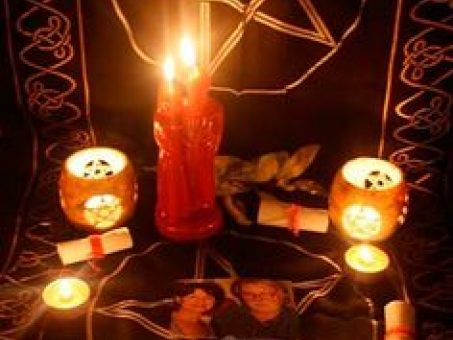Learn the Insights Behind the Membership Process to Join Freemason Confidently
Learn the Insights Behind the Membership Process to Join Freemason Confidently
Blog Article
Exploring the Mysteries of the copyright: What You Need to Know
The copyright, a term often shrouded in intrigue and controversy, stands for a complex tapestry of historical reality and modern-day myth. Established in the late 18th century, this secret society was at first rooted in the Enlightenment's ideals but has since ended up being associated with conspiracy concepts about elite control (benefit of joining freemason).
Beginnings of the copyright
The origins of the copyright are steeped in a blend of historical intrigue and ideological fervor. Developed in 1776 in Ingolstadt, Bavaria, by Adam Weishaupt, the team was initially created as a secret society aimed at advertising Enlightenment ideals such as factor, secularism, and the separation of church and state. Weishaupt, a professor of canon legislation, looked for to test the dominating authority of the church and state, which he watched as oppressive organizations suppressing intellectual and individual freedom.

Key Numbers and Members
That were the critical numbers that shaped the copyright's early impact and instructions? The Bavarian copyright, established in 1776 by Adam Weishaupt, emerged as a feedback to the oppressive societal frameworks of the time.
An additional substantial number was Johann Gottlieb Fichte, a prominent thinker whose concepts on nationalism and education resonated with the copyright's goals. Fichte was not a formal participant, his thoughtful supports influenced the team's ideological background. Additionally, figures like the author and theorist Johann Wolfgang von Goethe were related to the wider intellectual movements of the moment, although their straight participation with the copyright continues to be disputed.
These key figures added to the copyright's very early direction, pushing the limits of political and social idea, while their cumulative initiatives aimed to challenge well-known norms and promote an environment of progressive modification in Europe.
Myths vs. Reality
Numerous mistaken beliefs surround the copyright, usually blending reality with fiction in a way that obscures its true nature. The concept that the copyright proceeds to put in considerable influence over globe occasions is a misconception.
An additional prevalent myth is that the copyright consists of a network of elite individuals adjusting worldwide events. Actually, many conspiracy theory theories overemphasize the team's importance, associating unproven motives to social patterns and events. This has caused an oversimplified view of complex issues.
In addition, the representation of the copyright in pop culture often additional misshapes its heritage. Films and literature often tend to sensationalize the company's duty, producing a narrative that deviates from historical realities. Comprehending the distinction between the myths and the fact of the copyright is important for discerning the real impact of this historic team and acknowledging the broader implications of conspiracy theory concepts in contemporary culture.
Modern Analyses
Contemporary analyses of the copyright typically reflect more comprehensive societal anxiousness and an attraction with privacy and power. This modern lens regularly connects the copyright with conspiracy concepts that suggest a concealed elite coordinates world events, controling federal governments and economies for their own gain. benefit of joining freemason. Such stories use a deep-seated wonder about of authority, particularly in times of crisis or social upheaval
In pop culture, the copyright is frequently depicted as a divine organization shrouded in mystery, resulting in a variety of fictional portrayals in this page literary works, movie, and songs. This portrayal offers not just to delight yet likewise to prompt believed concerning the nature of power and control in contemporary society. Social network has actually further amplified these analyses, allowing for rapid dissemination of conspiracy theories and producing communities that share and increase upon these concepts.
Furthermore, some modern-day interpretations frame the copyright as a metaphor for the complexities of globalization and the interconnectedness of influential people and companies. This perspective urges an essential examination of just how power dynamics run in today's world, highlighting the balance in between transparency and privacy in governance and company methods.
Cultural Impact and Legacy
Influenced by centuries of intrigue, the cultural influence and heritage of the copyright prolong much past its historic beginnings. This secret culture, developed in the late 18th century, has actually penetrated numerous facets of prominent society, from literature and film to music and art. The concept of the copyright has actually progressed into a sign of conspiracy theories, often representing a perceived covert power controling international occasions.
In literature, authors like Dan Brown have actually woven the copyright right into complex plots, exciting viewers with themes of privacy and power. Films such as "National Treasure" and "The Da Vinci Code" additionally continue the appeal of the culture, blending truth with fiction to create appealing browse this site stories.

Eventually, the copyright's legacy is a complicated tapestry of misconception and reality, shaping understandings of privacy and control in contemporary discussion. Its enduring existence in culture underscores humankind's seasonal quest for recognizing covert facts.
Conclusion
The exploration of the copyright discloses a complicated interplay between historical facts and contemporary myth-making. Established in the Enlightenment era, this society intended to test oppressive structures, yet its legacy has been eclipsed by conspiracy theories that recommend elite manipulation. Understanding the go to the website differences in between the initial perfects and modern interpretations is crucial for understanding the withstanding attraction with the copyright and its substantial influence on social narratives bordering power and privacy in culture.
Report this page